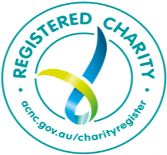The 21st of March this year will mark the 15th year that Harmony Day has been celebrated in Australia. Since its inception, the main message of this day is “Everyone Belongs,” a very pro-multiculturalism motto.

Harmony Day is a celebratory day. An All Together Now team member fondly reminisces about the day she immigrated to Australia several years ago, coincidentally on Harmony Day. The branded, orange glimmers generated from the Day’s celebrations made her feel welcome from the moment she arrived. The concept of Harmony Day is certainly hard to disagree with.
The UN and Harmony Day

Harmony Day happens to coincide with the United Nation’s International Day for the Elimination of Racial Discrimination. Given the multicultural agenda of both of these days, is this just a coincidence or is there more to Harmony Day?
Our research found there is little difference in goals between the United Nations’ initiative against racial discrimination and Harmony Day. At the core they can both be seen to aspire for a world without racial discrimination, the biggest difference is simply their names.
The usage of the word harmony has several connotations: amicability, cooperation, understanding; generally positive vibes flow from it. In contrast, the UN’s offering states plainly that there is a problem that everyone needs to address. It’s more precise, but less media-friendly.
We believe that naming racial discrimination better acknowledges the reality in society. Racism still exists in Australia—it’s why All Together Now exists. So if a day to stop racial discrimination already existed, why is it now called Harmony Day in Australia?
Harmony and a political agenda
“The Australian Government is not doing enough to combat issues related to racism.” This was the view noted in the media broadcast coverage prior to the first Harmony Day in 1999. Cue research from a think tank to push a political campaign and take advantage of this perceived discrepancy.
“The Australian Government is not doing enough to combat issues related to racism.”
Harmony Day was born from analyses carried out by Eureka Research in 1998 on behalf of the Department of Immigration and Multicultural Affairs (data released in 2011 under the Freedom of Information act). The John Howard-led Coalition Government was already dealing with the rise of multiculturalism and encompassing racial and national identity issues, so the research’s primary goal was to officially determine where the animosity was stemming from.
Unfortunately for the Coalition at the time, their publicised idea of a country “united by a common cause” was in direct disparity with Eureka’s findings. What an Australian was or looked like was no longer clear. Australia was multicultural but its international reputation was often being bogged down to petty (and serious) racism. The research noted that a positive campaign would be necessary to address the situation.
“We view the current uncertainty surrounding values and national identity as both a problem and a solution” — Eureka Research report
The Government needed a hook to get people on board with the political campaign, and it had to include everyone to fit in the Coalition’s vision. It had to be done without airing any negativity or implying that anyone was racist (despite widespread racism being clearly recognised by 85% of individuals surveyed in the first section of Eureka’s report).
Political solution
The hook came in form of a phrase: “living in harmony.” It was a key test point in the second phase of research that was proving successful.

The Eureka report was recommending the Government to build the beliefs that harmony in the community already existed; that it was worth protecting and that this harmony should be a call for celebration. Racial vilification seen in Australia was casually swept under the rug due to the premise of this idea, a move that would contribute to the denial of racism; a denial that still exists today.
The Government moved forward with the idea and, with an almost Orwellian touch, there was harmony within the communities; harmony had always existed within the communities. The marketing campaign was working and the birth of Harmony Day was underway.
The Coalition in Australia was responsible for introducing harmony, any political party going against the idea would founder and be perceived as saying yes to community dissonance. The campaign and party were difficult to argue against and Harmony Day was cemented into the Australian calendar.
Harmony Day 15 years on
Harmony Day is important but it is equally important to know its roots. Its title may conjure up the very idea aimed for by the campaign: harmony in the country already exists. It didn’t exist. An individual surveyed by Eureka Research stated the following inane and atrocious comment about Aboriginal and Torres Strait Islander peoples:
“They were here for 40,000 years and they did nothing. They should feel lucky that the people who came here were white.”
The issues of racism and racial discrimination still exist in Australia. That is not to say that Harmony Day or the International Day for Elimination of Racial Discrimination have been complete failures—these days are important days to commemorate and highlight that there is no room for complacency. Work still needs to be done to ensure intercultural harmony and end racial discrimination.
Commemorate Harmony Day and the International Day for the Elimination of Racial Discrimination on the 21st of March and use this day as an opportunity to reaffirm your commitment to speaking up against racism whenever you witness it.




I believe that Harmony Day came into existence in the form of Rainbow Ribbon Day in 1997. If you send me an email address, I can supply copies of reports on events organised in those years which were fairly obviously forerunner events. There were many opportunities for the Australian Government at that time to hear about and copy the earlier events including requests for sponsorship. The use of orange as a symbol for the day further pre-dates Rainbow Ribbon Day.
Owen Hitchings